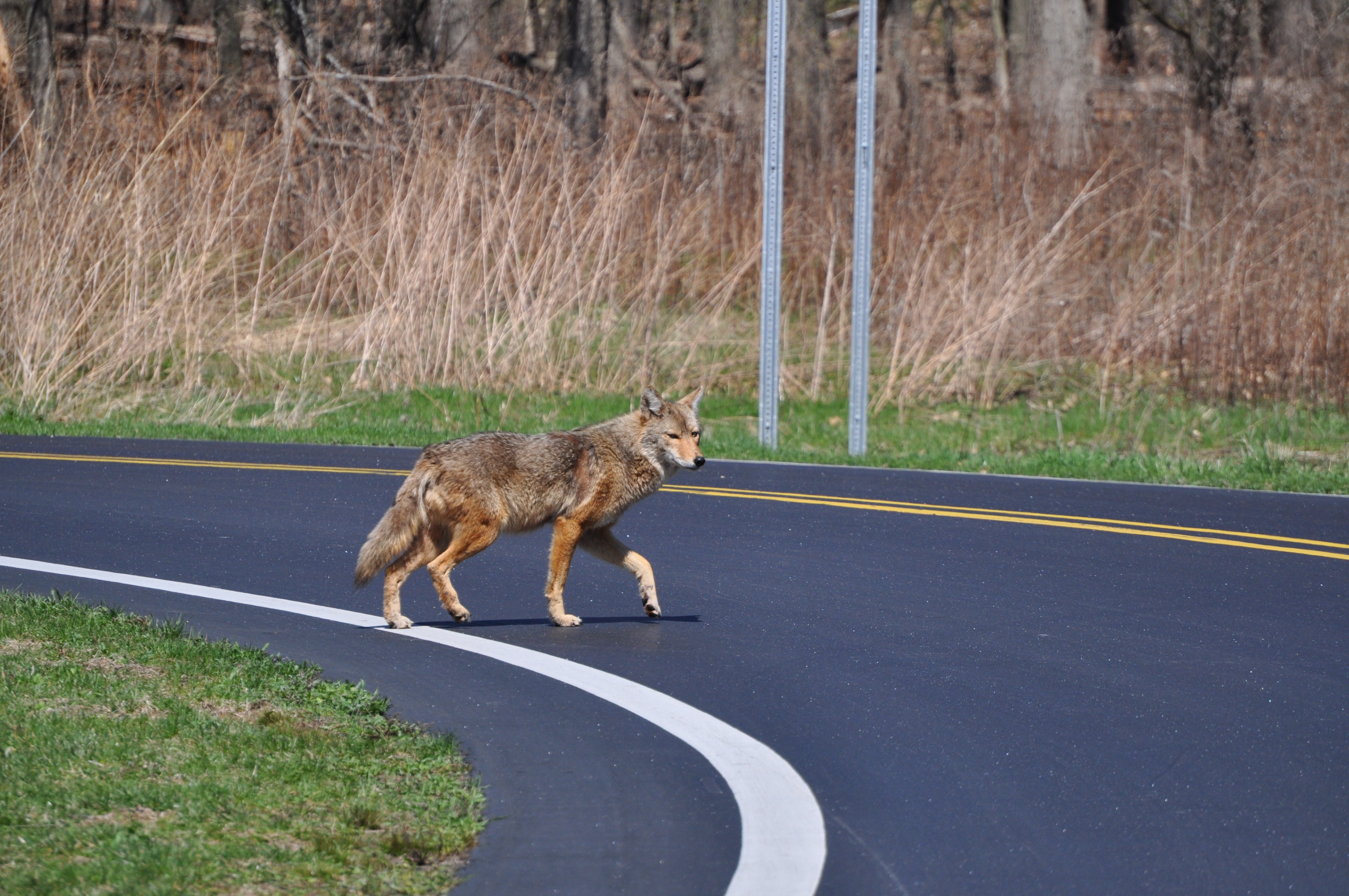Coyotes
The neighbor’s dog begins barking and howling. What’s up with that? And then we hear it—a jumble of high-pitched yips, barks, cries, snarls. And it sounds fairly close by. Clearly it’s not a pack of dogs. It’s not raccoons fighting. It sounds like coyotes making a kill. Or fighting among themselves. Or whatever coyotes do late in a summer evening. Here’s a link with a great recording of coyotes after midnight.
Adirondack Coyote Song | Music of Nature
Mark Twain described the coyote as “a living, breathing allegory of Want. He is always hungry. He is always poor, out of luck and friendless. The meanest creatures despise him and even the flea would desert him for a velocipede.” He also referred to the coyote as a “long, slim, sick and sorry-looking skeleton,” This is said to have inspired Chuck Jones and Michael Maltese to create Wile E. Coyote, who began his Looney Tunes misadventures with Roadrunner in 1949.

A coyote, we learn, is related closely to the wolf and can in fact interbreed with wolves, whelping coywolves. Coyotes are generally smaller than wolves, weighing about 18-44 pounds for males and 15-40 pounds for females. Their fur is described as light gray or red or fulvous in color interspersed with black and white. Now, fulvous—there’s a color you probably didn’t have in your box of 64 crayons. Wikipedia says it’s been around as a color since the 1600s and is variously described as dull orange, butterscotch, brownish-yellow or tawny. Use that in a sentence today! He has small feet, standup, pointy ears, a long nose, and a long bushy tail which he carries down while walking or running. He looks generally like a small wolf or a long skinny dog.
Native to North America, his name comes from a native American language in Mexico. He is also called a prairie wolf or a brush wolf. Coyotes range the western half of North America from Canada to Panama. Coyotes are extremely adaptable, and can live in forests, woods, prairies, deserts, or swamps. In recent years, they have been found in cities and suburbs as well. They live in dens which they either adopt and enlarge from other den-dwellers like badgers and woodchucks or, when all else fails, dig themselves. . The dens have several entrances/exits, and are used to whelp and nurse their pups and to sleep in.
Speaking of badgers, coyotes and badgers have been known to team up to go after underground rodents. The badger can dig them out, and the coyotes then catch them on the surface. Coyotes can actually run at about 40 miles an hour after prey like deer. They can also jump 13 feet at a time. Their primary predators, aside from wolves, bears and mountain lions who go after the pups, are cars on the road.
Coyotes generally live in family groups or loosely knit packs. As carnivores, they hunt deer, rabbits, rodents, reptiles, amphibians, and the occasional domestic cat. Their primary diet, though, includes rabbits, mice and 13-lined ground squirrels. They will also eat fruit or carrion. They are generally nocturnal, hunting at night, and that’s when you are likely to hear that eerie, spine-tingling, blood-curdling howl. In the wild, they live an average of ten years, and are usually monogamous.
These days, the term coyote might refer to a human smuggler helping migrants evade border patrols and enter a country illegally. Why do we call them after this particular animal? Most likely because especially in Meso-American lore, the coyote has a reputation as a trickster, using deception and humor against social norms. As much as I’ve read about these human smugglers, their adaptability, their nocturnal habits, their deceptive ways with both the border patrols and the migrants themselves, I can see the aptness of the name.
Like so many other creatures out there, coyotes are both a boon and a bane to local farmers. They keep rodent populations under control, and they aren’t averse to snagging a domestic chicken or an unwary cat.
Meanwhile the local pack of four-legged coyotes has stopped their racket, so presumably they got what they were after. Their howls and yips, barks and snarls remind me that even in the midst of our “civilized” neighborhood, something wild and free, and a bit terrifying, still lives out there.
Featured photo by Thomas Shockey

2 comments
Wile E. Coyote SUPER Genius!
He was in the Chuck Jones Gallery in Santa Fe. The Road Runner was there too!